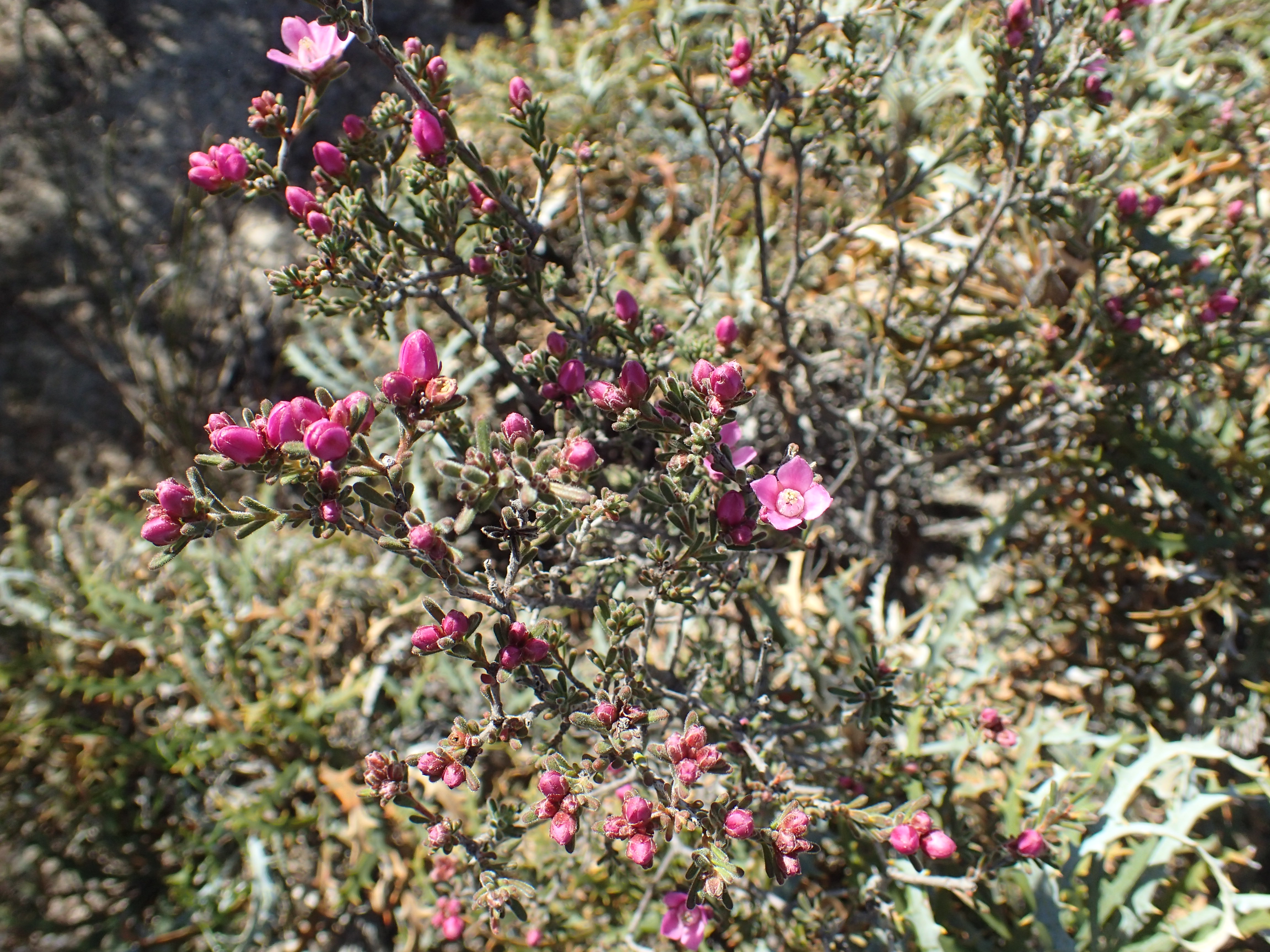Boronia Capitata on:
[Wikipedia]
[Google]
[Amazon]
''Boronia capitata'', commonly known as the cluster boronia, is a plant in the citrus family, Rutaceae and is endemic to the south-west of Western Australia. It is a slender, spreading shrub with simple leaves and pink, four-
petal
Petals are modified Leaf, leaves that surround the reproductive parts of flowers. They are often advertising coloration, brightly colored or unusually shaped to attract pollinators. All of the petals of a flower are collectively known as the ''c ...
led flowers.
Description
''Boronia capitata'' is a slender, spreading shrub that grows to a height of . It has simple, thick, linear to club-shaped leaves long. The flowers are pink and are arranged in clusters on the ends of the branches, each on a pedicel long. The four sepals are broadly elliptic to narrow triangular, and the four petals are broadly elliptic, about long.Taxonomy and naming
''Boronia capitata'' was first formally described in 1863 by George Bentham and the description was published in '' Flora Australiensis'' from a specimen collected by James Drummond. Thespecific epithet
In taxonomy, binomial nomenclature ("two-term naming system"), also called nomenclature ("two-name naming system") or binary nomenclature, is a formal system of naming species of living things by giving each a name composed of two parts, bot ...
(''capitata'') is a Latin word meaning "having a head".
In 1971, Paul G. Wilson
Paul Graham Wilson (born 1928) is an Australian botanist. He has been a most prolific contributor to the journal ''Nuytsia (journal), Nuytsia'', contributing to the first issue in 1970 and to the 12th volume in 1998, which was dedicated to him f ...
described three subspecies:
* ''Boronia capitata'' subsp. ''capitata'' has leaves and sepals that are glabrous or fringed with hairs and flowers from September to October;
* ''Boronia capitata'' subsp. ''clavata'' has thick leaves covered with long, soft hairs, and broadly elliptic sepals fringed with hairs and flowers from April to October;
* ''Boronia capitata'' subsp. ''gracilis'' slender leaves covered with long, soft hairs and narrow egg-shaped sepals with a hairy fringe and flowers from June to November.
Distribution and habitat
* Subspecies ''capitata'' is only currently known from sandplain habitat near Pingelly; * Subspecies ''clavata'' grows in heath between Corrigin, Hyden and Kojonup; * Subspecies ''gracilis'' grows in winter-wet swamps between Yarloop and Margaret River.Conservation
Subspecies ''clavata'' is classified as "not threatened" but subspecies ''gracilis'' is classified as " Priority Three" by the Government of Western AustraliaDepartment of Parks and Wildlife
The Department of Parks and Wildlife (DPaW) was the department of the Government of Western Australia responsible for managing lands described in the ''Conservation and Land Management Act 1984'' and implementing the state's conservation and en ...
meaning that it is poorly known and known from only a few locations but is not under imminent threat. Subspecies ''capitata'' is listed as "endangered" under the Australian Government '' Environment Protection and Biodiversity Conservation Act 1999'' and as " Threatened Flora (Declared Rare Flora — Extant)" by the Department of Environment and Conservation (Western Australia). The main threats to this subspecies are clearing and fragmentation of its habitat.
References
{{Taxonbar, from=Q15387979 capitata Flora of Western Australia Plants described in 1863 Taxa named by George Bentham